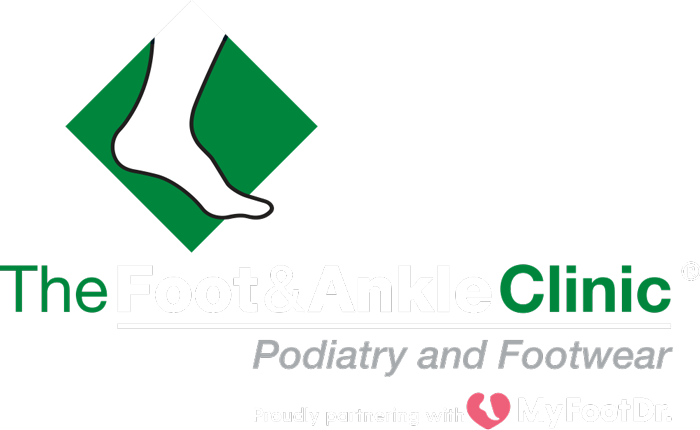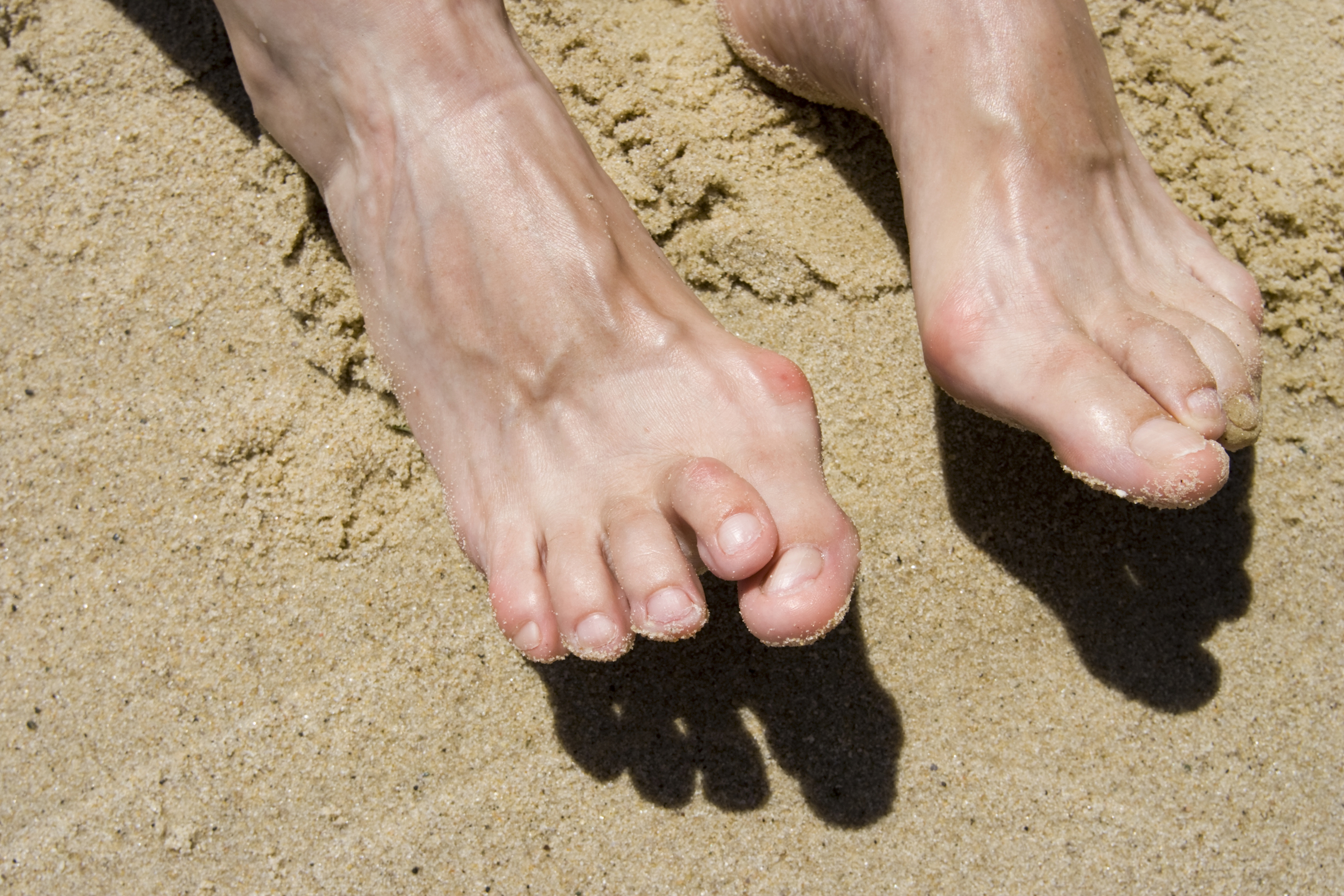Hammertoe
What is hammertoe?
Hammertoe is the general term used to describe an abnormal contraction or “buckling” of the toe because of a partial or complete dislocation of one of the joints of the toe or the joint where the toe joins with the rest of the foot. Other types of crooked toes include claw toes and mallet toes. These are basically the same as hammer toes but involve buckling at different joints in the toe.
Crooked toes themselves often do not cause pain. However, as the toe becomes deformed, it rubs against the shoe. The subsequent irritation causes the body to build up more and thicker skin to help protect the area. The common name for the thicker skin is a corn. At first, this thick skin helps reduce irritation to the bone prominence. As the skin becomes thicker, it adds to the pressure from the shoe. Periodic trimming of the corn may give temporary relief. However, over a period of time, a bursa may develop and if it becomes inflamed (bursitis), the area becomes red, swollen and painful. It may also become infected.
There are two joints in the lesser toes and one joint in the great toe. If the deformity occurs in the joint nearest the nail, it is called a mallet toe. The corn will usually develop on the tip of the toe. This is due to the pressure being on the tip of the last toe bone rather than at the fat pad under the tip of the toe. If the deformity is at the other toe joint, or where the toe joins the foot, it is called a hammertoe and the corn will occur on the top of the toe
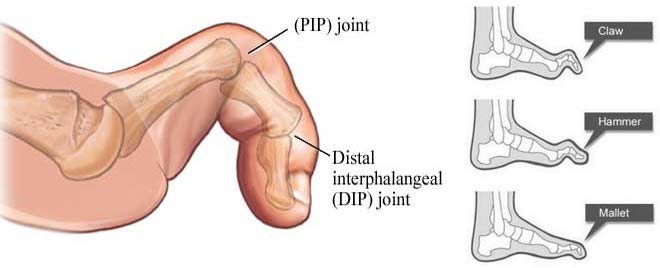
Do not confuse corns with calluses that occur on the bottom of the feet. They are generally caused by other conditions. A severe hammertoe, though, may create downward pressure on a metatarsal bone at the ball of the foot, and add to the cause of a callus.
A hammertoe may be present but not always painful unless irritated by shoes. One may have enlarged toe joints with some thickened skin and no redness or swelling. However, if shoes create pressure on the joint, the pain will usually range from pinching and squeezing to sharp and burning. Cramping in the toes, foot and leg may develop from the muscles and tendons functioning in abnormal positions because of the deformed joints. In long standing conditions, the dislocated joints can cause the pain of arthritis.
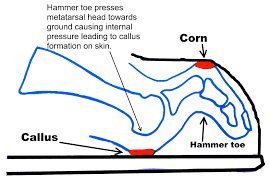
Other foot conditions and Hammertoe
Although there is little doubt shoes are responsible for causing corns, the size, shape and other characteristics of our feet are hereditary. The contraction and/or rotation of toes can be the result of poor mechanics of the foot, resulting in overpronation. This results in low or flat arches, which cause the muscles and tendons of the foot to twist the toes and joints away from their normal position. High arched feet (over‑supination) can also result in similar conditions.
A severe bunion may cause a hammertoe. As the great toe twists over or under the second toe, this causes the toe to dislocate. Shoes cause the corn, as the bony top of the toe rubs on the toe box of the shoe, but the underlying problem is the abnormal position of the toe joints, which may be hereditary.
The crooked toe is irritated by the pressure on the joint or spur. As a result, the skin becomes thicker to form a protection. The thicker the skin, the more pressure and eventually, a bursitis under the corn may develop. This causes the joint to become red, swollen and painful. In addition, the skin can break down and become infected.
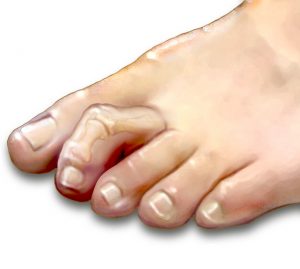
Treatment for Hammertoe
Do you have painful blisters, corns and even ulceration associated with your toes?
You may have a form of hammertoe which can affect any of the second, third, fourth, or fifth (little) toes. Abnormal bending of the toes can put pressure on the toe when wearing shoes, causing problems to develop.
You podiatrist is skilled at nonsurgical care of hammertoes but for persistent issues a consultation with Dr. Mark Gilheany should be considered.
Surgical options for hammertoe shave greatly increased with understanding of minimal invasive techniques. It is now possible to have those painful toes addressed permanently with an office based procedures performed under local anaesthetic. These procedures allow immediate wright bearing and return to footwear quickly. More complex conditions may still require a hospital day stay with more extensive procedures, increasingly this is becoming less necessary.
At the Foot and Ankle Clinic our highly qualified team of Podiatrists are all members of the Australian Podiatry Association and offer a combined 50 years’ experience. They are trained to diagnose and effectively treat hammertoe via a range of treatments.
Put your feet in our hands! See us today in Chadstone, East Bentleigh, Moe, Sale, Traralgon, Warragul & Online Store and Retail Enquiries. NO REFERRAL NEEDED!.
